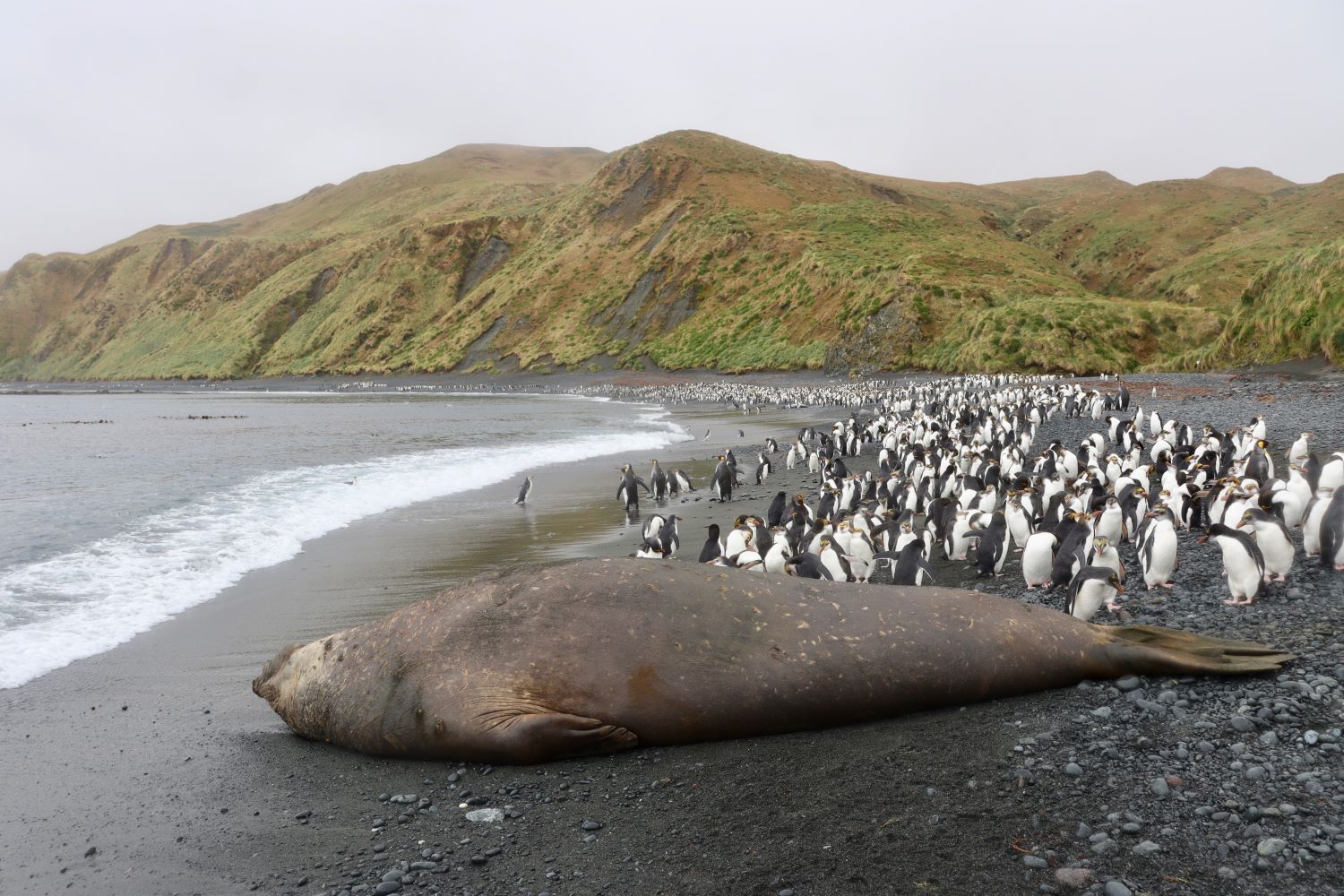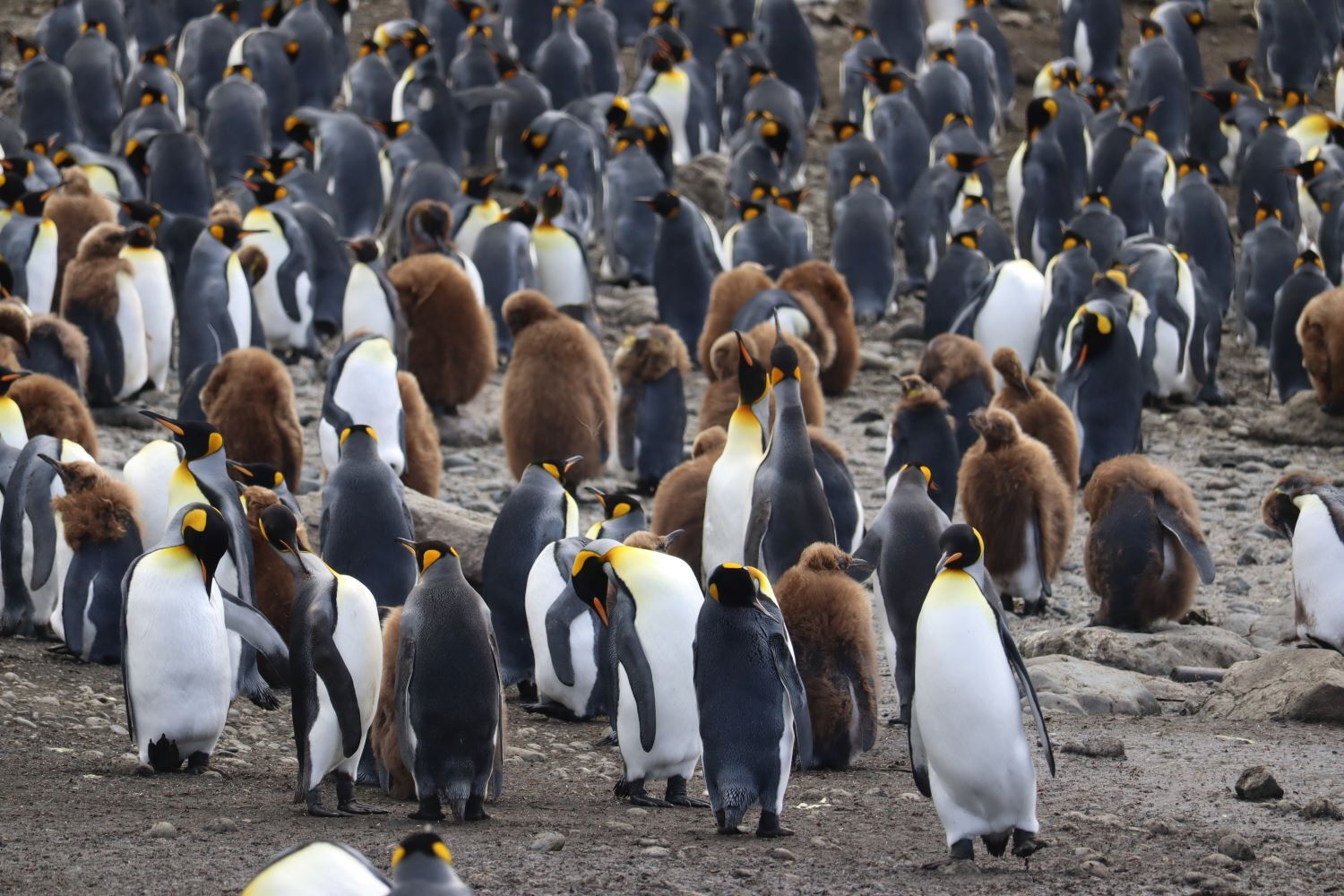Museum Conservation Technician, Louise Piggin, shares her journey of a lifetime in the Subantarctic Ocean.
In late 2023, I was incredibly fortunate to be awarded a True Young Explorer Scholarship by Heritage Expeditions, which enabled me to join a 12-day adventure to the Subantarctic Islands of Aotearoa New Zealand and Australia.

We journeyed to the Galapagos of the Southern Ocean – Tini Heke/Snares Islands, Motu Maha/Auckland Islands, Macquarie Island and Motu Ihupuku/Campbell Island. As a young heritage professional working at Canterbury Museum, which has a collecting focus on the Subantarctic Islands, I was thrilled to be able to visit some of the isolated and special places linked to the collection.
Our first stop was Tini Heke/Snares Islands, a small group of rocky islands south of Rakiura Stewart Island. The steep cliffs and dense bush are absolutely teeming with life. Exploring the coastlines by Zodiac boat, we spotted New Zealand fur seals, sea lions and the Snares Island Tomtit.
The spectacular sloping Snares Crested Penguin colony was an absolute highlight. It was amazing to watch the penguins waddling down the guano-covered slope, catching the waves and diving down into the sea to hunt for kai.
Knowing the history of castaways and shipwrecks in this area, it was interesting to reflect on how we were experiencing these isolated and wild places. We were venturing here as tourists – whereas throughout the nineteenth century many sailors and passengers found themselves shipwrecked and marooned, surviving through provisions placed by the New Zealand Government in castaway depots. The Museum cares for a tweed suit, from around 1900 from a Snares Island castaway depot. It has a specific pattern recognisable to officials to stop theft by those who were not in desperate need!

Travelling further south through the night, we woke up off the coast of Motu Maha/Auckland Islands. We went on a full-day hike across the eastern coast of Enderby Island; staring out to sea over exposed cliffs scattered with megaherbs, creeping quietly past enormous and aggressive sea lions, and frozen in awe as Southern Royal Albatross swept by, gliding in the wind.
We walked across the reef where the Derry Castle barque was wrecked in 1887 and despite the sunny day, I could imagine how different it would be on a rough and stormy night. The Museum collection holds the figurehead from the Derry Castle, which once marked the graves of those who perished.

While anchored in the Auckland Islands I gave a talk to others on board about the shipwrecking of the Dundonald on Disappointment Island in 1907, the coracle built by the survivors, which is in the Museum collection, and their subsequent rescue by the NZGSS Hinemoa.













